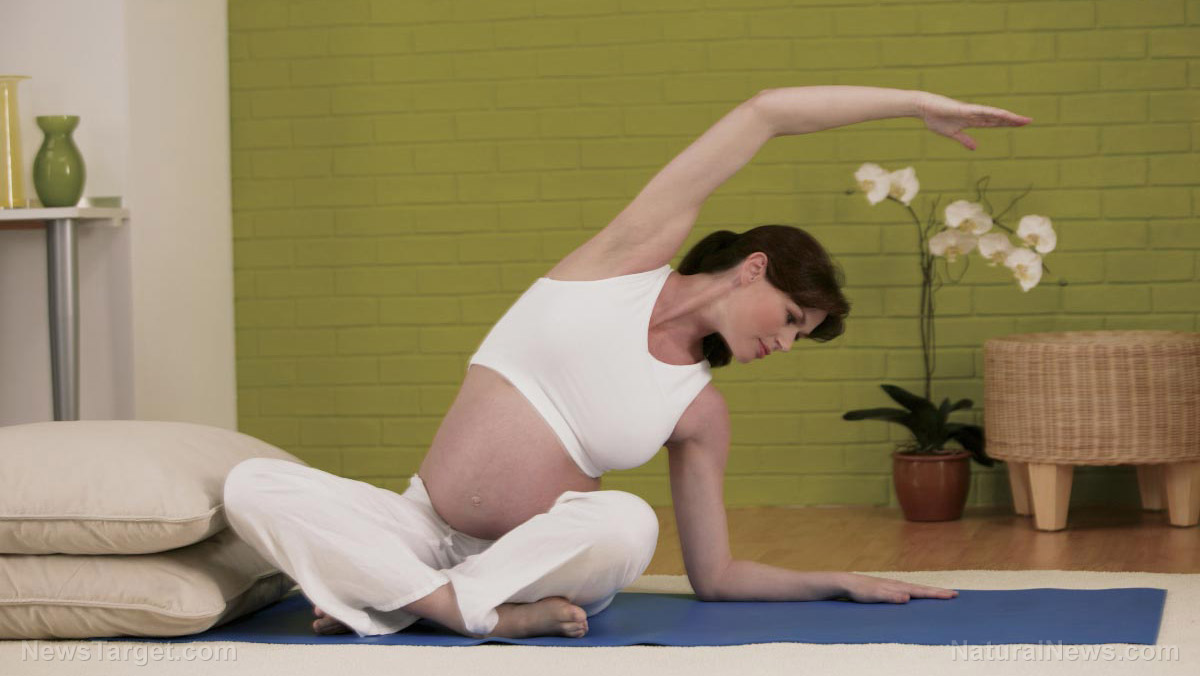Confirmed: Exercise during pregnancy yields many benefits for both mother and baby
12/27/2017 / By Janine Acero

There is now a strong scientific evidence that recommending moderate exercise to a pregnant mother is safe and beneficial for her and her growing baby.
The new study – carried out by experts from Camilo José Cela University (UCJC) in accordance with the recommendations by the American College of Obstetricians and Gynecologists (ACOG) – defines the physical activity patterns that were proven to have major physiological benefits for both mother and baby during pregnancy, as well as the exercises that may be detrimental to the development of the fetus.
“The percentage of women who meet the recommendations for exercise during pregnancy is very low,” according to María Perales, lead author of the study and a researcher from the Department of Physical Activity and Sports Science. “This is due in part to uncertainty about what type of exercise should be recommended and which should be avoided.”
The experts recommend combining aerobic and strength training exercises in each session in moderate intensity, which should last 45 to 65 minutes, over three or four days a week. Physical activity can be started between week nine and 12 of pregnancy (after the first prenatal visit) until week 38-39.
The study confirms that moderate exercise during pregnancy may prevent or reduce the risk of the following symptoms and conditions:
- Excessive weight gain
- Fetal macrosomia (babies who are born weighing more than four kilograms)
- Pre-eclampsia
- Gestational diabetes
- Lower back pain
- Pelvic pain
- Urinary incontinence
Techniques that boost mental health and promote pain reduction, such as pilates and yoga, are also often recommended for pregnant women. (Related: Exercise During Pregnancy Benefits Mother and Child.)
An unhealthy lifestyle during pregnancy may give way to adverse conditions such as excessive weight gain, pre-eclampsia, gestational diabetes, lower back pain, and urinary incontinence.
“The exercises recommended in our study should be performed not only by healthy pregnant women, but also by sedentary females prior to pregnancy since this is a good time to adopt a physically active lifestyle,” said Perales. “This also goes for women at risk of being overweight or obese or at risk of gestational diabetes and chronic hypertension.”
On the other hand, all physical activity to be minimized or avoided completely are “all that which is strenuous (90 percent of maximum heart rate), since it may increase the risk of hypothermia, dehydration or reduced uterine blood flow with the associated risk of compromising the fetus’ health,” according to Perales.
Likewise, long-distance running, intense weight training, jumps, impact exercises and exercises that require you to lie on your back, or with risk of falling must be avoided.
The study was published in the Journal of American Medicine Association (JAMA).
Simple pregnancy workouts
Pregnancy should not be a hindrance to keeping fit and healthy – as the above study has stressed, it also benefits your little one. Here are some simple exercises for every trimester that you can do at home:
- Keep moving – A straightforward method that will reduce back pain, give you more energy, a better body image and a faster return to your pre-pregnancy shape after delivery.
- Planking – Get down on your hands and knees. Place your wrists directly under your shoulders, then lift your knees and straighten your legs behind you. Your body should form a straight line in this posture. Don’t arch your back or let your belly sag.
- Side-lying inner and outer thigh – Lie on your right side and support your head with your forearm. Bend your right leg at a 45-degree angle while keeping your left leg straight. Place your opposite arm on the floor for stability. Lift left leg to about hip height and repeat for reps.
For more on women’s fitness, visit WomensFitnessFocus.com.
Sources include:
Tagged Under: baby health, exercise, healthy lifestyle, pregnancy, prenatal health, Women's Fitness, workout




















